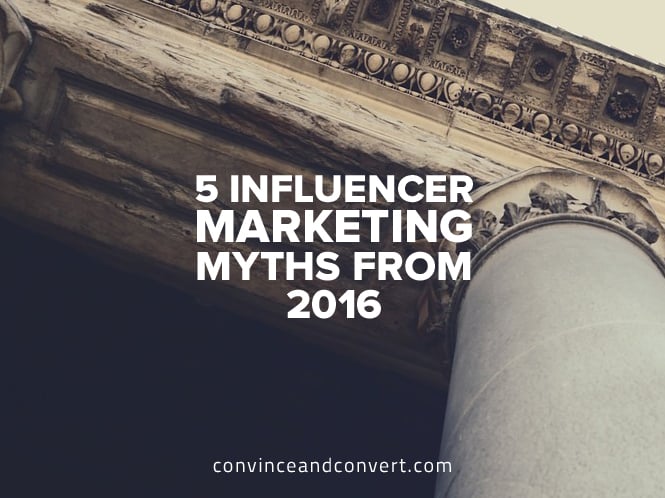
Getting started with an influencer marketing program can be an intimidating venture for a brand. With new information being released all the time, and examples of big-name companies finding success, it’s no surprise that misconceptions exist. Below we address five common influencer marketing myths and explain why they’re wrong.
1. Influencers Will Only Work with Brands If They Receive Monetary Compensation
As 2017 approaches, compensation is still one of the most asked-about topics in conversations around influencer marketing. Many content creators have spent years building loyal communities and solidifying their reputations as thought leaders, and they agree that providing their audience with quality content is more important than the paycheck itself.
Research by GroupHigh found that although 70 percent of content creators “prefer monetary compensation on a per-post-basis over affiliate partnerships, running ads on their blogs, or product trade . . . they will only take compensation from brands with products and services that align with their readership and personal branding.”
According to Jessica from Savory Experiments, “Balancing authenticity and paid sponsorship is a delicate balance. For me, I only accept agreements from brands that I truly believe in—being genuine and real is what my blog is based on. I’ve turned down very well-paid programs due to not feeling in-tune with a message or product.”
2. FTC Sponsorship Compliance Is Not Important
A few months ago, the Federal Trade Commission announced plans to tighten oversight around paid promotion disclosure. But is requiring influencers to disclose brand sponsorship really that important? The answer is yes. From Warner Bros to Lord & Taylor to the Kardashians, it seems no one is safe from the FTC’s recent crackdown on deceptive influencer sponsorship.
Mistakenly leaving out an “#Ad” hashtag in an Instagram caption is one thing, but according to a survey by influencer marketing platform SheSpeaks, “One out of four influencers has been asked not to disclose their commercial arrangements with a brand.” The consequences? Examples like Lord & Taylor may have gotten away with only slaps on the wrist, but according to the FTC, violations like these “may result in a civil penalty of up to $16,000.”
3. Measuring ROI Is the Biggest Challenge in Influencer Marketing
Many marketers try to report on everything: mentions, engagement, social shares, brand lift, website traffic, increase in social following, sales conversions, impressions, and more. In fact, marketers should choose two to three specific key performance indicators and follow the growth over time rather than trying to keep track of heaps of irrelevant data. The top two metrics marketers use to track their influencer campaign efforts are:
- Traffic from media to a specific site.
- Social shares of a post.
4. An Influencer’s Total Reach and Social Follower Numbers Are More Important Than Relevance and Audience Engagement
When it comes to influencer marketing, bigger simply isn’t always better. Just because an influencer has a large following on social media doesn’t mean their content reaches and gets interacted with by the entire group. Working with a content creator who commonly posts about similar topics and has an active and loyal readership will always yield more engagement.
There should be a compromise somewhere in the middle. You want someone in a niche that is related to what you are selling because they will be authentic and passionate and able to nurture their following. But you also want them to have a nice reach to help engage with the content. Rather than taking into account followers alone, InsightPool, an influencer-marketing platform, focuses outreach efforts on relevance, influence, and activity all together.
[contextly_auto_sidebar]
5. Short-From Social Content Yields the Same Value as Long-Form Content
Short form content in the form of Tweets, Instagram photos, or Pinterest pins are, as the label suggests, meant to be short in length and consumed quickly by the audience.
The benefit of using short form content is to drive engagement and clicks, but the return is much shorter, and the lifespan of an average tweet, for example, is only 18 minutes. Long form, in comparison, is meant to give the audience a more insightful look into the topics. The benefits here are higher SEO rankings on Google search results and more social shares, with three thousand to 10 thousand-word posts gaining the most average shares. The best strategy is using them in conjunction with one another, as a way to push viewership and amplify rich blog content.
Influencer marketing is notoriously dynamic and always changing. Identifying and learning about industry misconceptions are great places to start when developing an approach of your own.
Get more content like this, plus the very BEST marketing education, totally free. Get our Definitive email newsletter.

